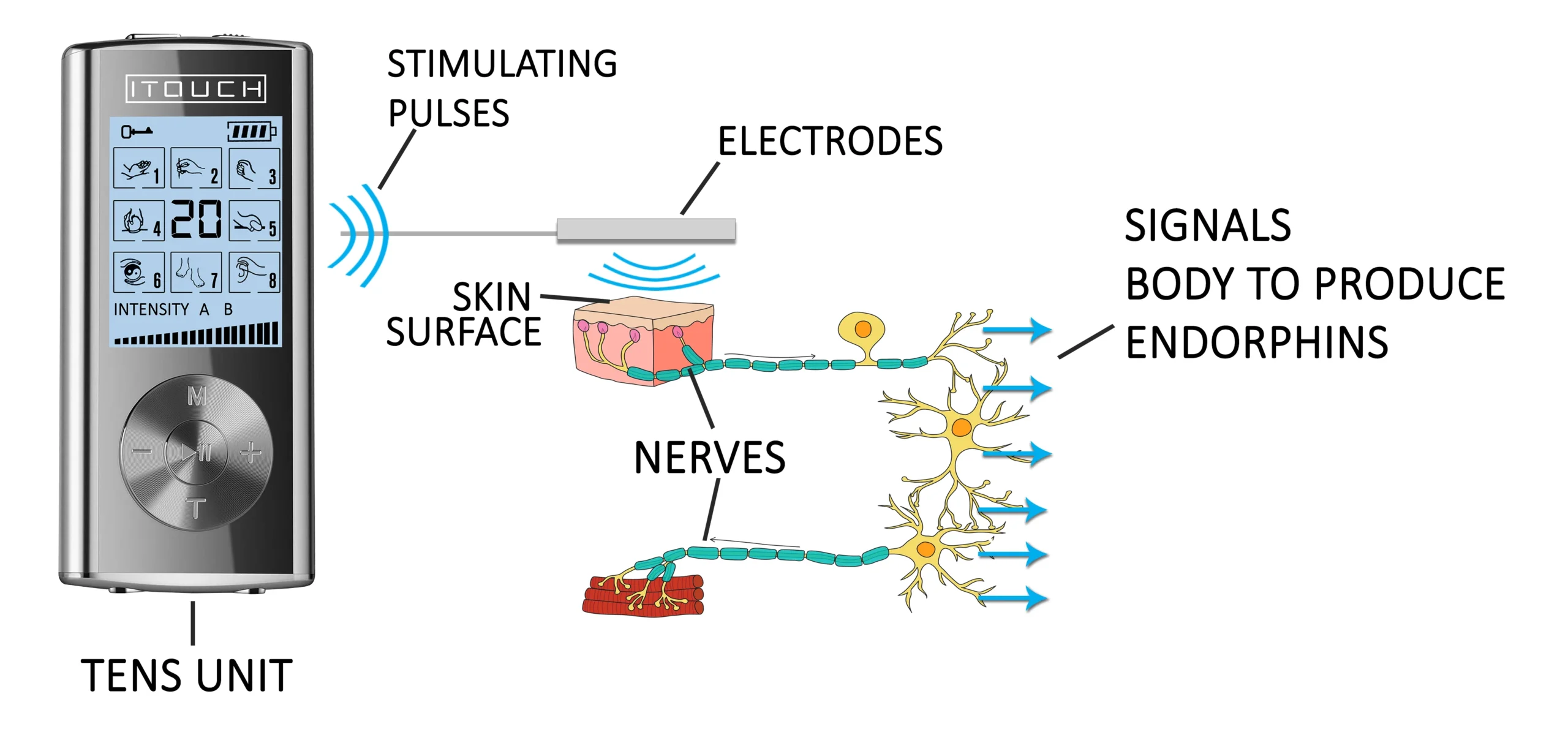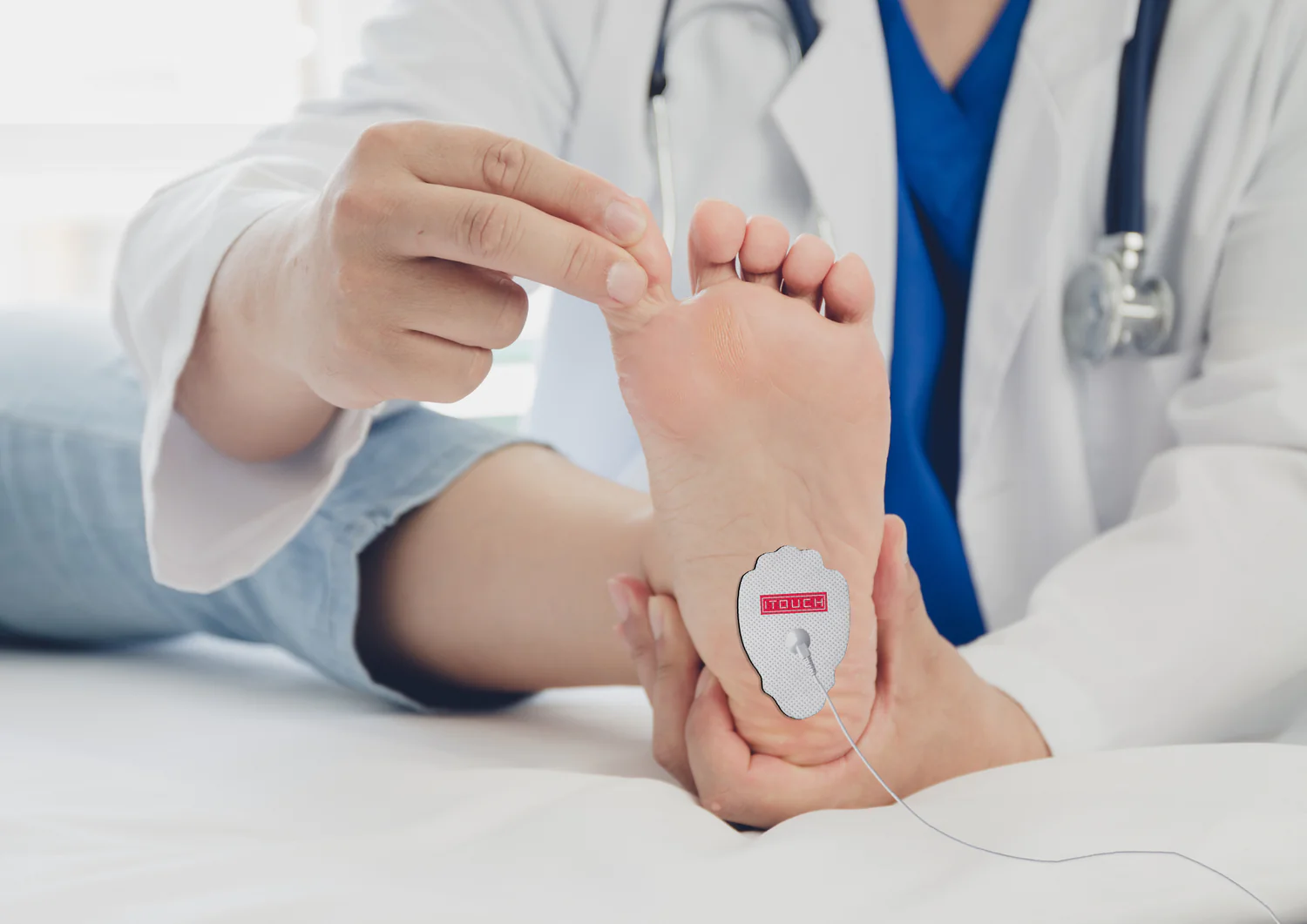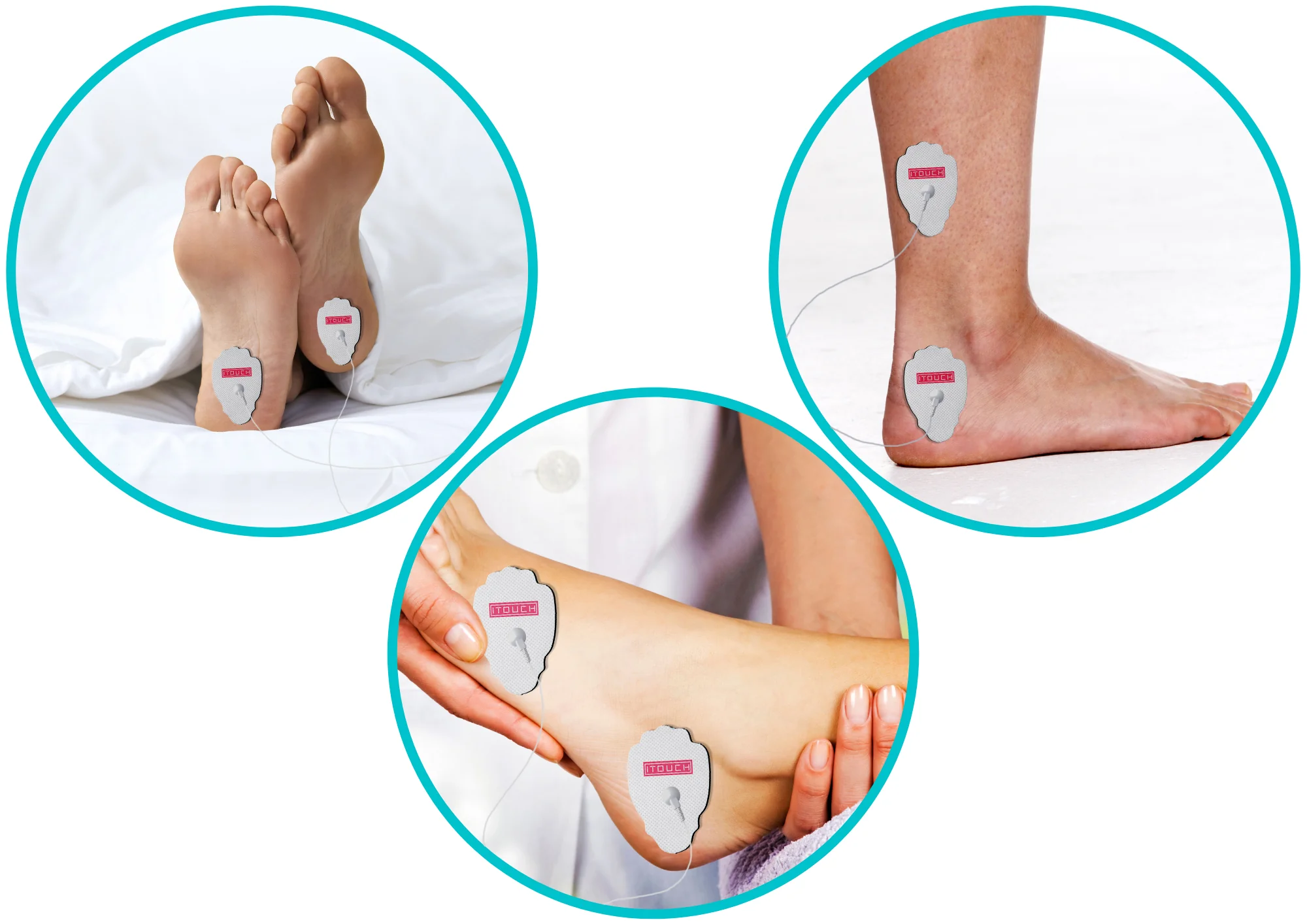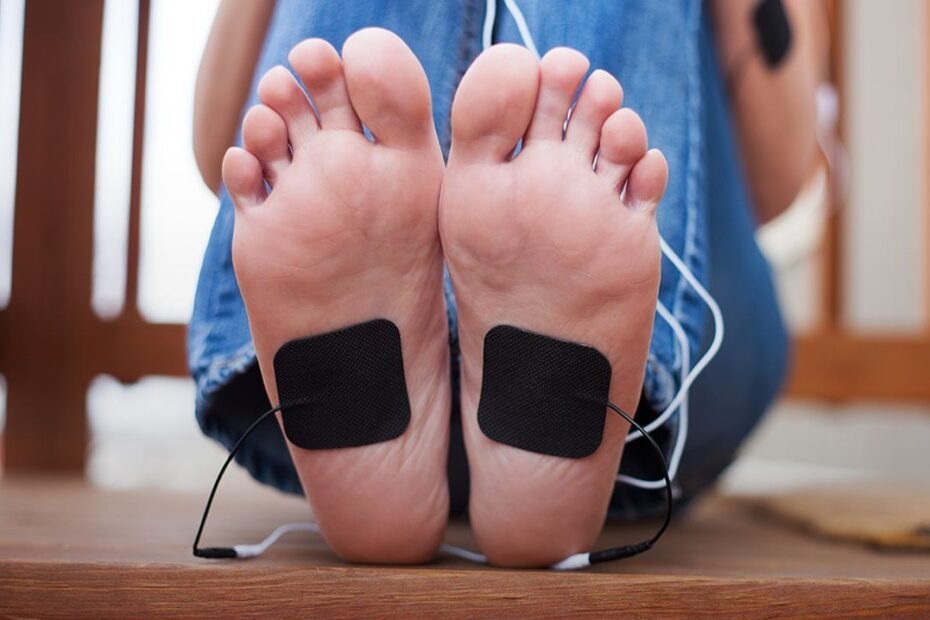In the early hours of the morning, when the world is still cloaked in the serenity of its slumber, Jane tiptoes out of bed. The anticipation of a new day is quickly overshadowed by the sharp, stabbing pain in her heel—the unwelcome greeting of plantar fasciitis. Jane, like many others, has navigated through various treatments, seeking solace from this relentless discomfort. Her journey, marked by trial and error, leads her to a promising ally: the TENS Unit for plantar fasciitis. This story mirrors the silent struggle of countless individuals, yearning for a day when stepping out of bed doesn’t feel like a Herculean task.
Understanding Plantar Fasciitis
Plantar fasciitis, characterized by the inflammation of the plantar fascia—a thick band of tissue running across the bottom of your foot and connecting your heel bone to your toes—afflicts approximately 2 million people each year in the United States alone. This condition is not just a morning menace; it’s a persistent hindrance that impacts the quality of life, making every step a calculation of discomfort.
The TENS Unit for Plantar Fasciitis: A Beacon of Hope
Transcutaneous Electrical Nerve Stimulation (TENS) has emerged as a beacon of hope for those entangled in the grip of plantar fasciitis. TENS Units, small, portable devices that deliver electrical impulses through electrodes placed on the skin, have been instrumental in pain management. But how effective are they in the context of plantar fasciitis?
Recent studies highlight the potential of TENS Units for plantar fasciitis relief. A study published in the “Journal of Foot and Ankle Research” revealed that participants who used TENS therapy reported a significant reduction in pain levels, with improvements in both mobility and overall quality of life. Another research indicated that TENS therapy, when combined with traditional treatments like physical therapy and stretching, can enhance the effectiveness of these interventions, providing a multifaceted approach to pain management.
The mechanism behind TENS involves the electrical impulses interrupting or blocking the pain signals sent to the brain. Moreover, these impulses can stimulate the production of endorphins, the body’s natural painkillers, offering a dual-fronted attack against the discomfort of plantar fasciitis.

Role of TENS in Alleviating Plantar Fasciitis
TENS therapy can play a significant role in alleviating the pain and discomfort associated with plantar fasciitis. By targeting the affected area with electrical stimulation, TENS therapy can help manage the discomfort and reduce inflammation related to plantar fasciitis. The application of TENS therapy to the soles of the feet can provide relief from the pain, stiffness, and inflammation caused by plantar fasciitis, promoting an active lifestyle and improved daily activities. TENS therapy is a valuable addition to the treatment plan for plantar fasciitis, aiding in the circulation, flexibility, and management of pain in the affected area.
Is TENS Unit for Plantar Fasciitis Right for Everyone?
TENS therapy may not be suitable for everyone and there are certain situations where it may not be advisable. It is important to consider contraindications and consult with healthcare professionals before using TENS therapy. Additionally, understanding the potential risks and side effects of using a TENS unit is essential for safe and effective treatment.
Situations where TENS Therapy may not be Advisable
While TENS therapy is generally safe, there are situations where it may not be advisable or suitable for individuals. Some of the situations where TENS therapy may not be recommended include:
- Individuals with a history of epilepsy, as electrical stimulation may trigger seizures.
- Pregnant individuals or those with active cancer, as the effects of electrical stimulation on these conditions are not well understood.
- Individuals with open wounds, skin irritation, or redness in the affected area, as electrical stimulation can worsen the condition.
- Individuals with sensory impairment or the inability to communicate discomfort or pain, as they may not be able to effectively use and monitor TENS therapy.
- It is always recommended to consult with healthcare professionals before using TENS therapy, especially if you have any specific medical conditions or risk factors that may contraindicate its use.
Possible Risks and Side Effects of Using TENS
Proper placement of electrodes is vital for TENS therapy to prevent skin irritation and discomfort, especially when targeting foot pain and plantar fasciitis. It’s important to adhere to recommended treatment duration and frequency to avoid overuse, which can lead to skin redness. Monitoring the intensity of electric stimulation is crucial in minimizing side effects. Understanding the potential risks and appropriate use of TENS therapy is essential for safe pain management, demonstrating its value as a non-invasive option for conditions like plantar fasciopathy.
Diverse Types of Electrical Stimulation Therapies
The treatment of foot pain and plantar fasciopathy often involves electric stimulation, with various types available. Transcutaneous Electrical Nerve Stimulation (TENS) aims to stimulate the nervous system for pain relief, while Neuromuscular Electrostimulation (NMES) targets muscle stimulation for improved function and strength. Interferential Current (IFC) therapy utilizes PHP to alleviate heel spurs and offer a non-invasive alternative to NSAIDs. Electronic Muscle Stimulation (EMS) can aid in gait correction and muscle re-education when supported by proper footwear. Each type presents unique benefits and considerations for addressing plantar fasciitis.

An Insight into Transcutaneous Electrical Nerve Stimulation (TENS)
Transcutaneous Electrical Nerve Stimulation (TENS) can effectively manage foot pain and inflammation associated with plantar fasciitis and heel spurs. This electric stimulation targets nerve endings, aiding in pain relief by increasing blood flow and triggering the release of endorphins. TENS therapy offers a non-invasive approach to alleviating plantar fasciopathy, making it a favorable option for individuals seeking relief. Additionally, utilizing TENS machines over extended periods ensures continuous support in managing discomfort without the use of NSAIDs or other pharmaceuticals.
Neuromuscular Electrostimulation (NMES) Explained
Targeted at muscle stimulation using electrical impulses, NMES offers support for plantar fasciitis rehabilitation and strengthening. By improving blood circulation and reducing foot stiffness, this technique facilitates an active lifestyle despite discomfort. NMES also plays a crucial role in physical therapy, offering valuable pain management for plantar fasciitis. It’s an effective approach to alleviate foot pain, supporting patients in their journey towards recovery and improved mobility.
The Concept of Interferential Current (IFC)
Interferential Current (IFC) therapy utilizes various modes of electric stimulation to alleviate foot pain, particularly in the case of plantar fasciitis. It effectively targets discomfort and aids in the circulation and stretching of the plantar fascia. Tailored to individual needs, IFC delivers comfortable stimulation for managing plantar fasciitis pain and can be a valuable part of comprehensive treatment, possibly reducing the need for NSAIDs or neuragenex. Additionally, it complements other interventions such as supportive shoes and gait modification, making it a versatile option for addressing plantar fasciopathy.

Understanding Electronic Muscle Stimulation (EMS)
Electronic Muscle Stimulation (EMS) involves using electrical pulses to induce muscle contractions and relaxation, providing a supportive approach for daily activities, particularly for individuals with plantar fasciitis. This technique aids in managing foot pain and inflammation, promoting the release of endorphins, and reducing swelling in the foot. Additionally, EMS therapy facilitates muscle stimulation, offering relief from plantar fasciitis discomfort. It is an effective method that can complement other treatments such as supportive shoes, NSAIDs, and Neuropathy support formula (NSF).
The Superiority of Electroanalgesia over Traditional E-Stim Devices
When considering electroanalgesia, its effectiveness in managing foot pain and plantar fasciopathy surpasses that of traditional electric stimulation devices. The high-pulse currents of electroanalgesia make it superior for long-term pain and inflammation management, particularly in individuals with heel spurs or those at risk of plantar fasciitis. Unlike traditional e-stim devices, electroanalgesia offers more targeted relief, making it a promising option for individuals seeking alternatives to supportive shoes, NSAIDs, or neuragenex. Its impact on the nervous system and gait alignment sets it apart as an advanced form of electric stimulation.
Emphasizing High-Pulse Currents
With high-pulse currents, TENS therapy effectively targets plantar fasciitis discomfort by stimulating the nerves and providing relief in the foot. This type of electric stimulation can be particularly beneficial for managing severe cases of foot pain and inflammation associated with plantar fasciitis. Additionally, high-pulse currents offer a heightened level of relief for chronic plantar fasciitis discomfort, making them a valuable aspect of TENS therapy for plantar fasciitis.
Long-Term Pain and Inflammation Management
Effective long-term management of plantar fasciitis pain and inflammation is crucial for maintaining an active lifestyle. TENS therapy plays a valuable role in daily discomfort and inflammation management associated with plantar fasciitis. Through the ongoing use of TENS machines, individuals can experience a reduction in plantar fasciitis ache, supporting their pursuit of an active lifestyle. The electric stimulation provided by TENS machines proves beneficial in the management of foot pain and plantar fasciitis discomfort, offering a sustainable method for minimizing discomfort and promoting an improved quality of life.
The Effectiveness of E-Stim for Pain Reduction
Electric stimulation (E-Stim) has shown promising results for pain reduction associated with plantar fasciitis. This non-invasive technique targets the nervous system to alleviate foot pain, often caused by conditions like heel spurs and plantar fasciopathy. By using supportive shoes and incorporating E-Stim therapy, individuals may experience reduced discomfort. E-Stim can also be a suitable alternative for those unable to tolerate or respond to conventional treatments like NSAIDs or neuragenex. Understanding its effectiveness in pain management can help in enhancing the overall treatment plan for plantar fasciitis.
How to Choose the Right E-Stim Device
When choosing the right E-Stim device for plantar fasciitis, it’s crucial to consider the various modes and intensity of treatment offered. Look for devices that provide a tailored level of stimulation and comfortable experience. Additionally, ensure that the electrode pads are suitable for the soles of your feet. Consider the different modes and settings available for optimal treatment, and select a device suitable for long-term use and effective pain relief. This thoughtful selection process can help in alleviating foot pain and managing plantar fasciitis effectively.
Tips for Effective Use of E-Stim Devices
When using E-Stim devices for plantar fasciitis relief, ensure the correct placement of electrode pads to optimize the treatment. Adjust the intensity based on your comfort and pain signals. Integrate E-Stim into daily activities for consistent relief. Using E-Stim devices regularly effectively manages plantar fasciitis pain. Seek guidance from a healthcare professional for proper usage. Consistency and correct application are key in maximizing the benefits of electric stimulation for foot pain relief.
When to Consider Alternatives to TENS Therapy
Exploring alternative treatments for plantar fasciitis is essential in understanding when TENS therapy may not be the most effective option. Situations where using a TENS unit for plantar fasciitis may not be the most suitable choice warrant considering alternative treatments for pain relief. Understanding the conditions under which it is advisable to consider alternatives to TENS therapy for plantar fasciitis is crucial. Factors such as foot pain, heel spurs, and risk factors associated with plantar fasciopathy may necessitate exploring other treatment options. Considering supportive shoes, neuragenex, and the use of nsaids, alongside the impact of gait and the nervous system, can help determine when to consider alternatives to TENS therapy.
Exploring Other Treatment Options for Plantar Fasciitis
When addressing plantar fasciitis, it’s crucial to explore a range of alternative treatment options beyond TENS therapy. These may include supportive shoes, physical therapy (PT), non-steroidal anti-inflammatory drugs (NSAIDs), and innovative solutions like NeuraGenex. Additionally, understanding the impact of risk factors such as heel spurs and the role of the nervous system in plantar fasciopathy can provide valuable insights. Exploring gait modifications and the potential benefits of electric stimulation modalities like IFC and EMS is also essential for comprehensive treatment.
The Role of TheHeelGP.com
For those navigating the complexities of plantar fasciitis treatments, TheHeelGP.com serves as a lighthouse, guiding sufferers toward informed decisions about their care. Offering comprehensive reviews of treatment options, including detailed insights into the efficacy of TENS Units for plantar fasciitis, we empower individuals with the knowledge they need to reclaim their steps from the clutches of pain. It’s a resource tailored to the needs of sufferers, ensuring that the journey toward relief is not walked alone.

Where should a TENS unit be placed on the foot?
To achieve optimal relief from plantar fasciitis, place the TENS unit on the bottom of the foot where the pain is most acute. Position the electrodes on either side of the heel and ball of the foot for maximum coverage. Experiment with different locations to find what works best for you. Always follow manufacturer instructions and consult a healthcare professional before using a TENS unit for plantar fasciitis relief.
What’s the best way to use a TENS machine for Plantar Fasciitis?
To optimize the use of a TENS machine for Plantar Fasciitis relief, follow these steps: 1) Apply TENS pads on the affected area. 2) Gradually increase intensity until you feel tingling or tapping. 3) Use for 20-30 minutes, up to three times daily. Remember to consult with a healthcare professional before using a TENS machine.
How Often Should You Use Your TENS Machine for Plantar Fasciitis?
To maximize the effectiveness of TENS therapy for plantar fasciitis, it is crucial to follow your doctor’s or physical therapist’s instructions. Generally, using a TENS machine 2-3 times a day for 20-30 minutes per session is recommended. Start with lower intensity settings and gradually increase as needed. Consistency in using TENS therapy regularly will yield the best results.

Conclusion – TENS Unit for Plantar Fasciitis Relief
The path to overcoming plantar fasciitis is as unique as the individuals who tread it. With the advent of TENS Units, there’s a promising horizon for those seeking relief from this debilitating condition. Through education and informed choices, platforms like TheHeelGP.com play a crucial role in the healing journey. As we continue to explore and embrace these advancements, the question remains: What steps will you take towards a pain-free tomorrow?
I hope you found this blog helpful and please feel free to comment and share.
Thanks for reading!
 | Tracy J. Founder, The heel GP |
